The Australian property market for cattle enterprises is showing some encouraging signs of recovery, but in most areas, the recent increase in volume of sales has not yet been matched by rises in value.
That was the general trend evident in a property market update provided last night by national valuation company Herron Todd White on the occasion of HTW’s 25th anniversary, marked by a function in Brisbane.
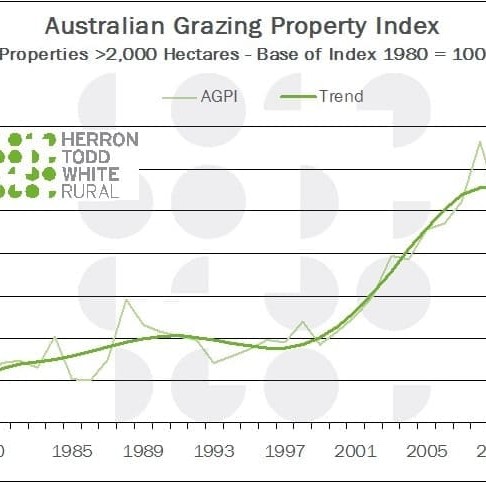 HTW’s rural director, Tim Lane, said after two or three years of very slow turnover due to declining value and flat demand, some vendors were now resigned to meeting the market, and the number of sales in most cattle areas had started to grow during 2013.
HTW’s rural director, Tim Lane, said after two or three years of very slow turnover due to declining value and flat demand, some vendors were now resigned to meeting the market, and the number of sales in most cattle areas had started to grow during 2013.
HTW’s national grazing property index, which has been published since 1980 as a broad indicator of values for properties +2000ha, shows the $ per hectare trend continuing downwards – but the trend is flattening, meaning the worst may now be behind the market.
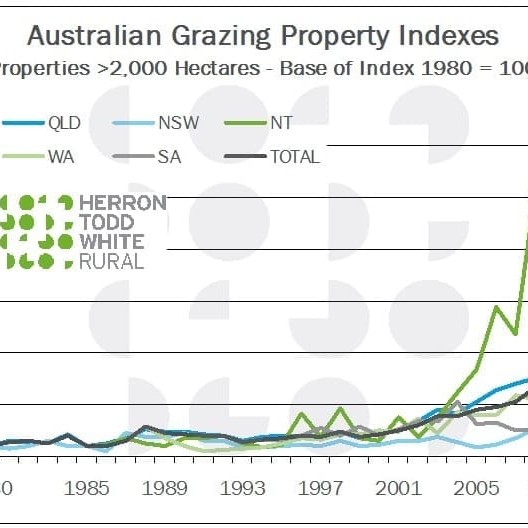 “This year will be an interesting year, in a lot of areas for grazing land values,” Mr Lane said.
“This year will be an interesting year, in a lot of areas for grazing land values,” Mr Lane said.
Looking at statistics on a state basis, the big movements over the past decade are clearly evident in the second graph published here, particularly for the northern markets of the NT and Queensland.
“Again, in some of those markets, we are starting to get a sense that there is some levelling 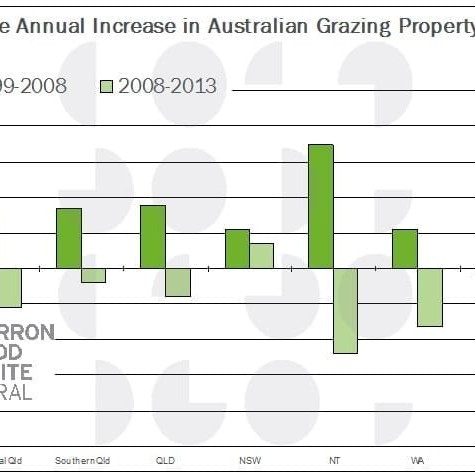 occurring, and a little more confidence is evident in some sectors,” Mr Lane said.
occurring, and a little more confidence is evident in some sectors,” Mr Lane said.
Another chart presented was an interesting comparison of average values in different regions of Australia for the ten years to 2008, versus the six years since 2008-13.
“Some of the market areas reflect contractions, while in others, particularly in the south, the market really has not come-off at all, and in the cases of NSW, continues a slow increase, based on median price values.”
National indexes based on the scale of grazing enterprise show a recent general downward trend, while there was a little abnormality in the 10,000-40,000ha bracket since 2011 due to a couple of larger sales where there were very few earlier.
Regional breakdown
As in most areas, central and northern New South Wales had experienced a low volume of sales last year, and a growing disparity between local land-holders and the corporate sector in perceptions of value.
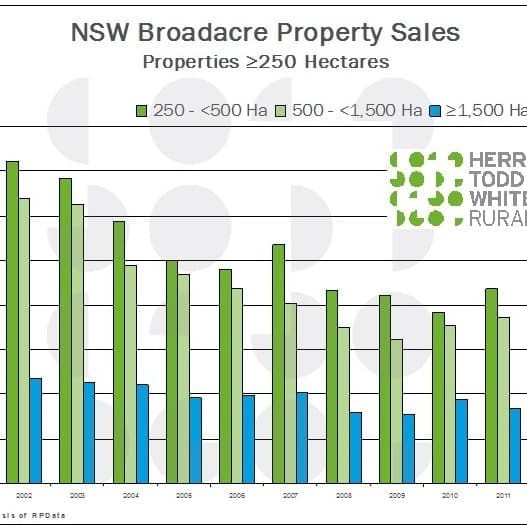 “You’ll hear talk of a two-tiered market. Corporates, without the encumbrance of debt, have the capacity to be a little more aggressive as a buyer. They’re not silly about it, but are certainly in there at a different level than the debt-driven market,” Mr Lane said.
“You’ll hear talk of a two-tiered market. Corporates, without the encumbrance of debt, have the capacity to be a little more aggressive as a buyer. They’re not silly about it, but are certainly in there at a different level than the debt-driven market,” Mr Lane said.
“There’s a distinct lack of appetite for debt among family investors, and the environment remains generally tough for those non-corporate properties across the board.”
Breaking NSW down into zones, the market had been fairly strong in the southern part of the state, largely due to the very good seasons over the past five years or so. Value trends had been mixed, with size categories up and others down, but no real damage across the board.
“One of the interesting points in the NSW market – and it applies in other states as well – is that general increase being seen in the volume of sales that’s starting to occur,” Mr Lane said.
“While values remain pretty steady, we are seeing more activity generally across most size categories. For example we are seeing people buying a little ‘bolt-on’ piece, as opposed to the whole property next door. They are incrementally expanding at that level, with smaller purchases.”
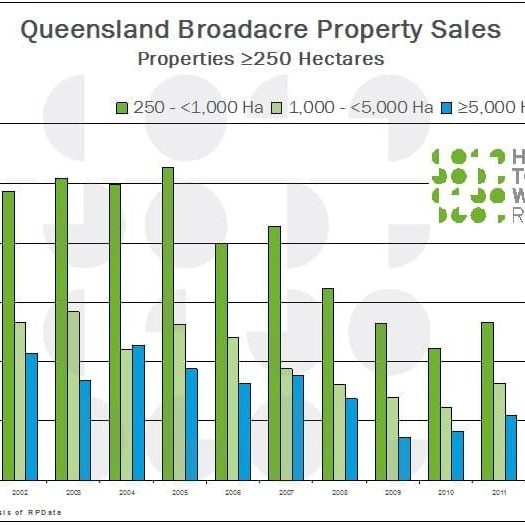 In Queensland, some had described 2013 as the ‘Year of the Receiver.”
In Queensland, some had described 2013 as the ‘Year of the Receiver.”
“Is it happening? Maybe yes, maybe no,” Mr Lane told last night’s gathering.
“The reality is that roughly 25pc of property sold in the Queensland market last year was receiver-type activity, but 75pc were not. It gets played up a little in the media, but the agency and bank guys in the room will know that the reality is there is a bit of pressure out there, and some have had action taken, but we have to be a bit careful about bottling that market sentiment.”
The Queensland property market continued to labour under desperately dry conditions.
The level of infrastructure and improvements was vitally important in attracting buyer interest, Mr Lane said.
“We’re still seeing that the good quality assets with well-developed fencing and water infrastructure are really what buyers are interested in. If a vendor really does not have that, it’s almost a case of why both to take it to the market.”
While the mining and gas sectors had added a lot of value and liquidity into the Queensland grazing property market in previous years, there was not a lot of activity in that space any more, and it would be interesting to see whether the miners, having done their development, might now offer some of those properties back to the market under lease-back or other arrangements.
There had been some good, market value outcomes in southern Queensland, Mr Lane said.
2013 was also a better year in Central Queensland in terms of volume of sales, but the market remained generally soft. Properties in the region up to $2 million in value (supported by off-farm income) and those +$10 million (where corporate demand was a factor) were travelling better, but there was a gap in the middle for $2-$10m properties which were harder to shift. There was some sound demand for better blocks below about $5m, albeit with realistic pricing.
Again, the mining sector previously had a big influence in that market space, with upwards of $500 million coming into that market in 2011. “Take that liquidity out of the market and it will inevitably have an impact,” Mr Lane said.
In North Queensland, about 25pc of the sales last year, again, were receiver-related, against 75pc on-market. Volume of sales last year in the region had risen to close to the 2008-09 period. There had been a falling-off in value of lighter country better suited to the live export market last year, but there was now more confidence evident given the return to much higher cattle prices and demand.
Some of the sales since 2009-10 for the better country types with good access and infrastructure had sold to similar value rates, and new value levels were now being established.
Large-scale property activity had been limited, however with the recent spate of sales in the NT market, there could be a return to a steady turnover of larger stations following a stalemate in sale volumes, Mr Lane said.
Again, the general price per hectare across Queensland was still trending down, but the rate of decline had slowed. In terms of volume, it was a similar story as in NSW, with an increase in activity in smaller properties, while larger ones were fairly steady.
“The total activity is certainly ticking along a bit bitter in Queensland. The reality is that after three years of hearing about the market, more vendors are accepting the market level, to a degree.”
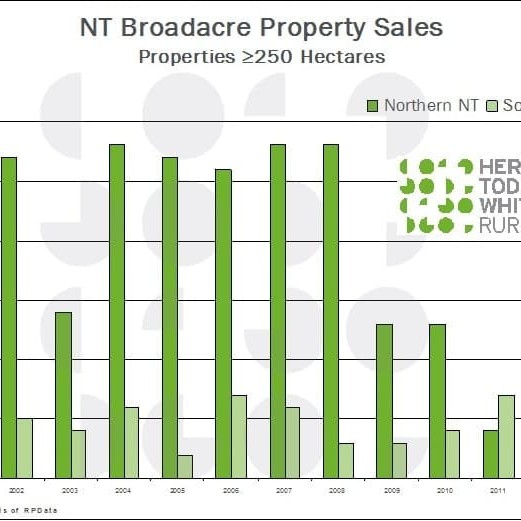 In the Northern Territory, there was low demand up until about six months ago due to the live export market circumstances, after which it was “almost like the lights were switched on again,” Mr Lane said.
In the Northern Territory, there was low demand up until about six months ago due to the live export market circumstances, after which it was “almost like the lights were switched on again,” Mr Lane said.
During the last quarter last year, several major sales including Labelle Downs and Riveren/Inverway had the effect of setting the general perception that “this was most likely the bottom,” he said.
Since August the mood had become more positive, with growing demand for a range of cattle weights from Vietnam and Malaysia, and a return later in the year from Indonesia.
“Things are certainly a lot more positive today, and people are looking even at some of the NT’s secondary-type assets, with a view that they can buy them, put some infrastructure in to increase capacity and increase supply.”
As in other regions, the NT had shown a small increase in sales volumes last year, after two very tough years.
“If we can see that trend continue this year, that would be a pretty good outcome overall in the NT,” Mr Lane said.
